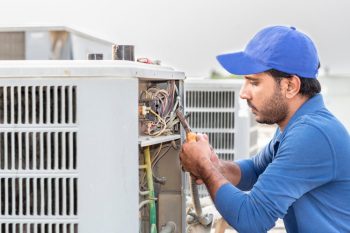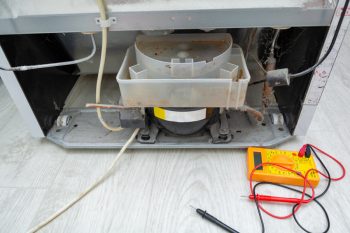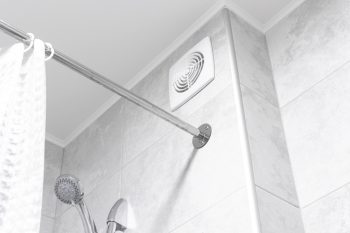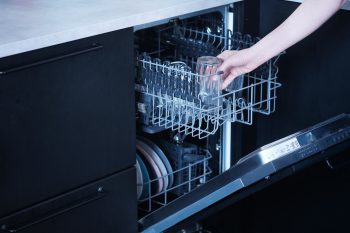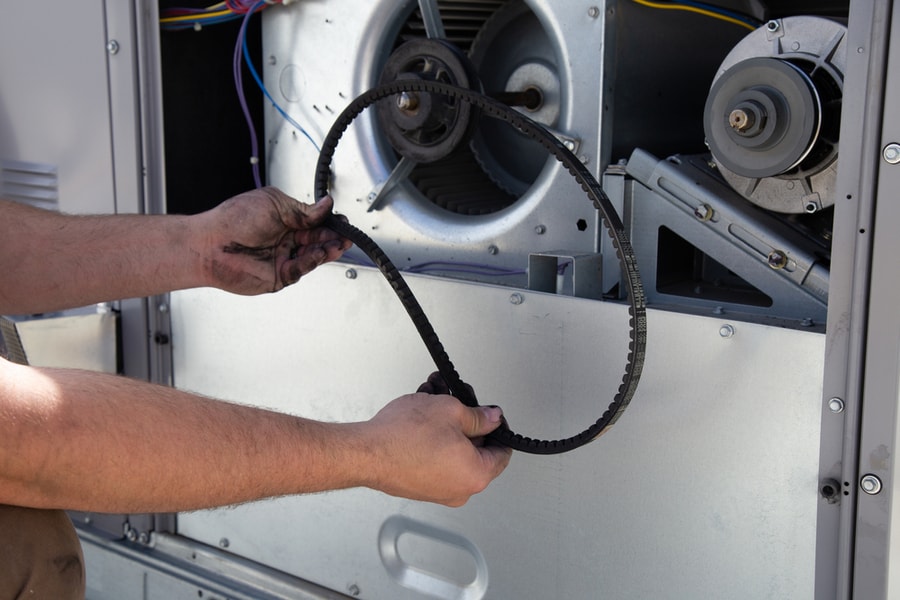
Your home AC’s compressor is one of its major working components. This engine pressurizes the refrigerant and circulates the chemical through the system to achieve heat exchange.
Of course, your AC compressor would have to use some belt to do this, and it does.
An air conditioner’s compressor belt is a vital part that moves all of the components of your compressor. So anything that causes the belt to malfunction will inevitably cause problems with your AC’s cooling performance.
So what exactly can cause an AC compressor belt to fail? Here are some possibilities.
- A compressor belt can crack and even snap over time.
- If the belt disengages from its track, it will keep the AC from operating properly.
- Corroded AC parts can lock and prevent the belt from doing its job.
- A worn and loose belt will fail at pulling the different AC parts.
As the most overworked part of your air conditioner’s internal system, the compressor belt is often met with quite a lot of abuse. So it is no surprise that the belt may malfunction after several years of problem-free use.
4 Reasons for an AC Compressor Belt Malfunctioning
1. Wear and Tear
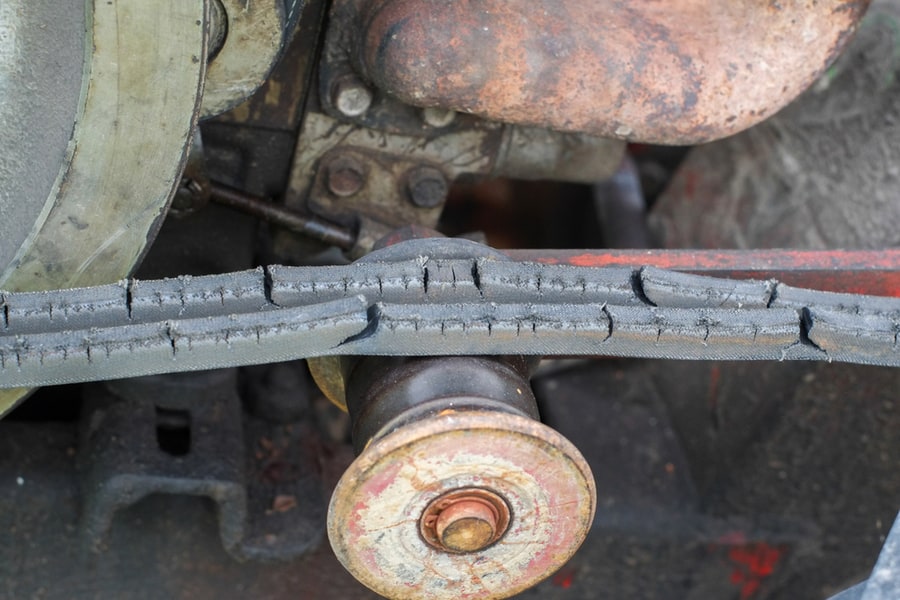
The compressor belt is made from a durable rubber material designed to withstand constant friction and heat over a long period. The serpentine belt doesn’t last forever, that’s for sure and it can give out over several years of use.
Cracks in the belt material can cause malfunction. Even worse, if the belt’s rubber becomes too brittle, it can snap. When this happens, the compressor won’t move, and your AC will fail to cool your space.
2. Track Misalignment
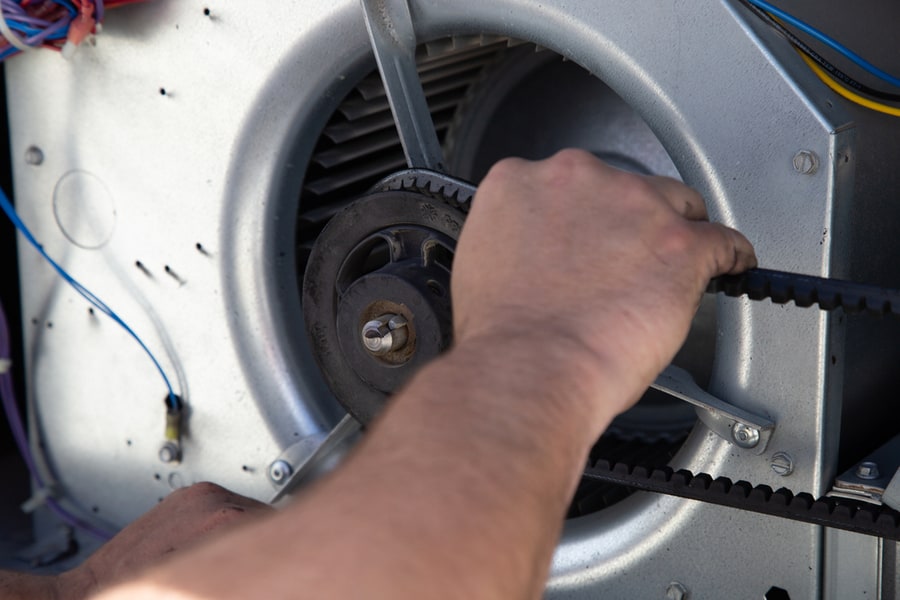
A track inside the compressor makes sure that the belt stays in place. It’s possible, however, for the belt to become misaligned due to constant use. If it disengages from the track, it might not move all of the necessary parts.
In this case, it might not be necessary to replace the belt outright. But if it’s become worn and stretched, causing it to loosen away from the track, it might be ripe for a replacement.
3. Corroded Parts
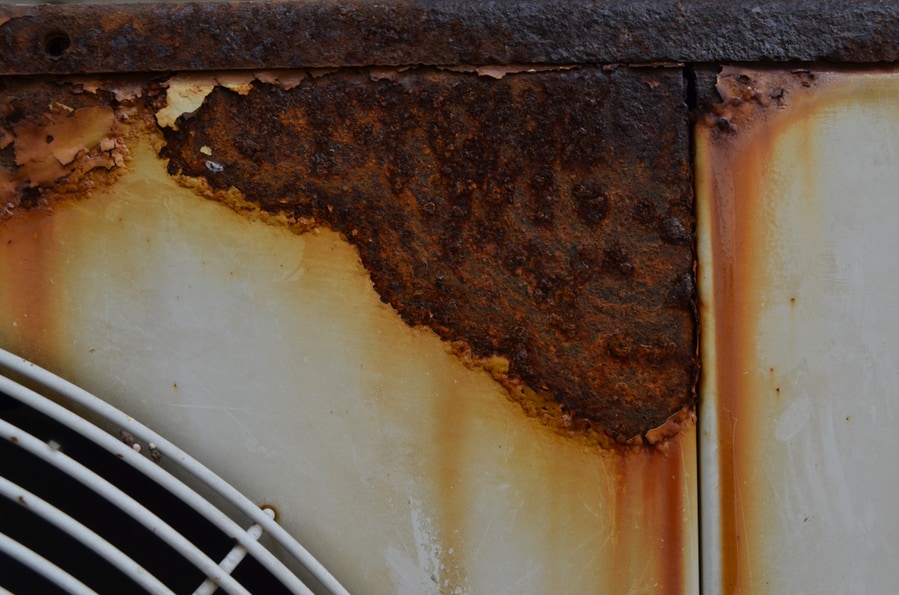
It’s possible for your compressor belt to hitch and lock if other parts inside the air conditioner are stuck.
Corrosion, low refrigerant levels, debris, and blockages inside the various other components of your AC can stop certain parts from moving with the belt. If that happens, the belt may get stuck as it pulls on the immovable part.
4. Slackened Belt Material

As the rubber constantly moves and pulls at various components, it could loosen and widen over time. This results in a poor fit.
When this happens, the belt could fail to pull on the different parts of the AC system. So as the air conditioner is turned on, the belt remains resting on its track because it isn’t tight enough to cause a pull.
Make sure you know what you’re doing. While it is possible to replace an AC compressor belt without the help of a professional, it requires some technical know-how.
Sometimes, you may have to calibrate its tightness and alignment, which isn’t always intuitive.
If you’re unsure how to replace the belt, have an HVAC professional do it first. An improper replacement could lead to further damage to your AC.
Takeaway
A compressor belt is an essential AC component that ensures everything moves and works. So when it malfunctions, you can expect poor cooling performance from your air conditioner.
Check for possible problems to find out why your compressor belt might fail so you can find the right solutions.
Frequently Asked Questions
How Much Does AC Compressor Belt Cost?
The part itself is relatively cheap at just $25 to $75. Labor fees could range between $75 and $120. Of course, all of these prices depend on the make and model of your AC and your location.
When Is It Time To Replace a Compressor Belt?
Some signs will tell you when to replace a compressor belt.
These include the following:
- Fraying
- A glazed, shiny surface.
- Separating belt layers.
- Cracks in the rubber material.
- Poor, loose fit.


